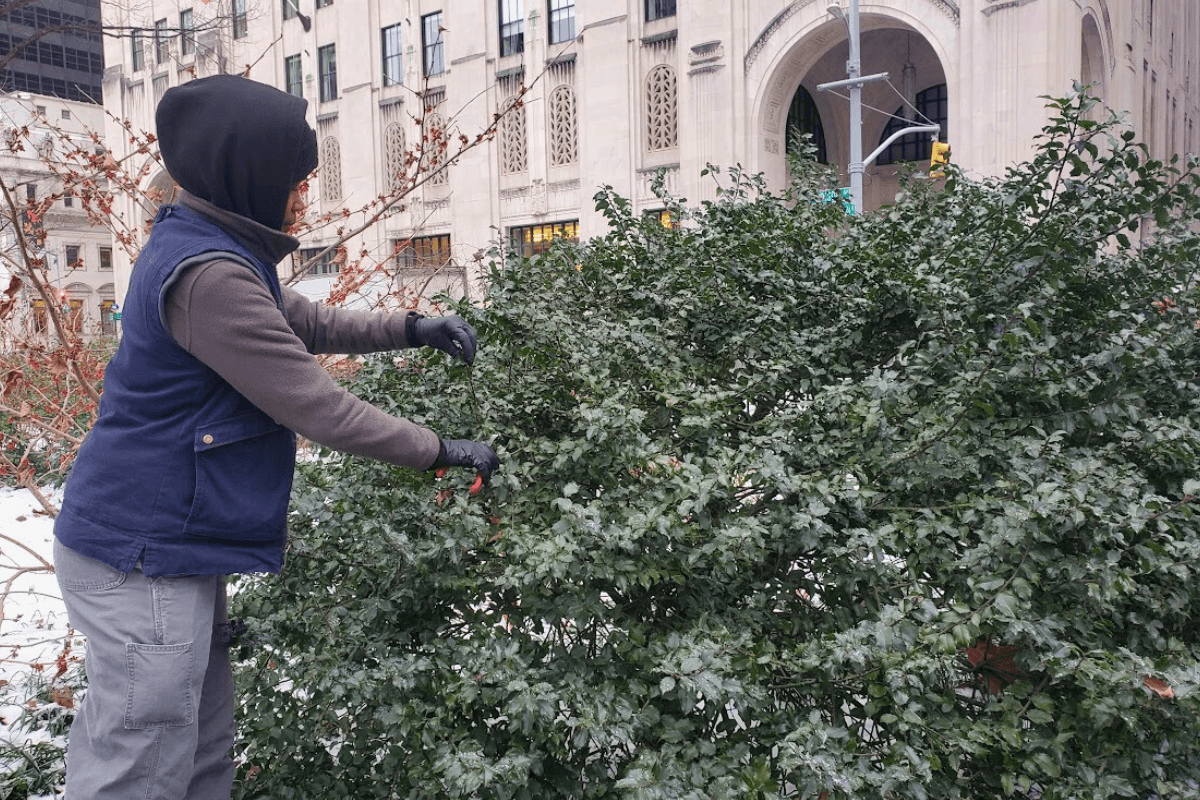This site uses cookies – Learn more.
Pruning in the Park
Pruning in the Park

Did you know winter is one of the most important times to work in the garden?
Just as humans are cozying up on the couch with a warm blanket and a cup of tea – outdoor plants are entering a state of hibernation and dormancy. The plants slow down their growth and other activities during this resting state. Dormancy is the ideal time to prune the many plants that are not early spring bloomers. The best time to prune spring-blooming plants is after they’ve flowered.
In Madison Square Park, this work is essential to keeping the trees and shrubs healthy and vigorous. Each January, all trees in Madison Square Park are inspected for structural issues, damage, and preventative maintenance. Completing this work while the trees are dormant and the branches and trunks are clearly visible helps to spot problems early.
Each pruning cut opens a wound in the plants when plants are pruned. Most healthy trees heal naturally, but trees with weakened immune systems need extra support. Winter pruning helps facilitate the healing of these areas by reducing their exposure to fungi and other pathogens that are active during the warmer months of the year. Some plants like elms (Ulmus spp.) are prone to disease and can only be pruned during this dormant time without providing additional anti-fungal treatments.
Other shrubby and herbaceous plants benefit from pruning during this time for the same reasons. The garden team goes bed by bed, pruning back deadwood, crossing branches and crowded plants, and helping shape specimens to create more floriferous plants. Herbaceous perennials are cared for during this time with dead stem removal or evergreen foliage cut back to allow plant rejuvenation. Late winter and early spring are also ideal times to move plants in the garden and divide plants for increased vigor prior to the start of the growing season.



